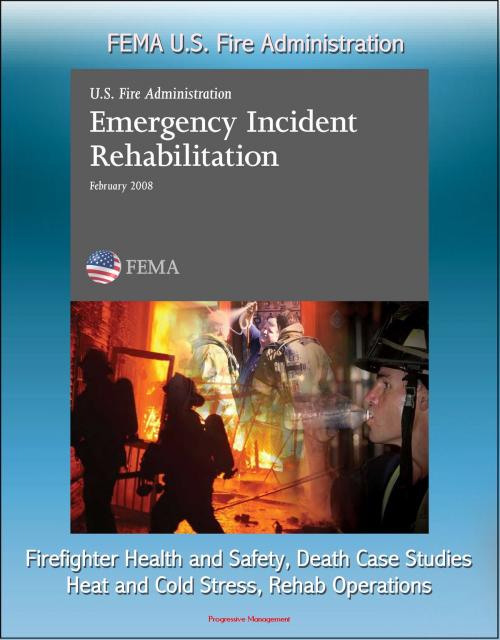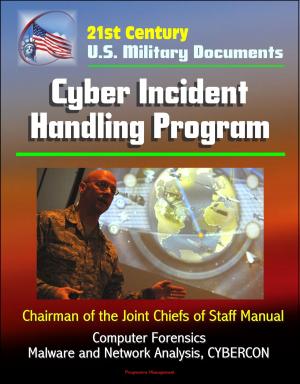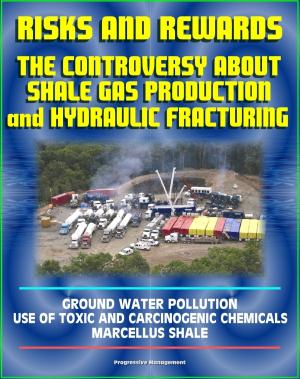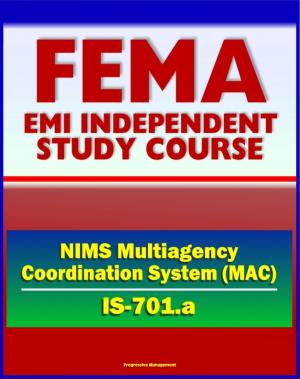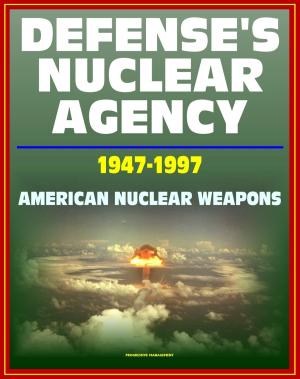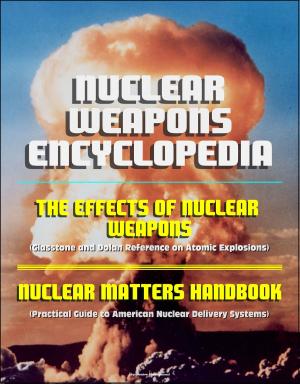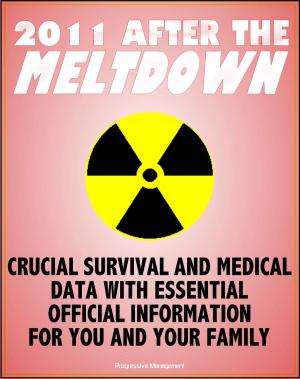FEMA U.S. Fire Administration Emergency Incident Rehabilitation: Firefighter Health and Safety, Death Case Studies, Heat and Cold Stress, Rehab Operations
Nonfiction, Health & Well Being, Medical, Allied Health Services, Emergency Medical Services| Author: | Progressive Management | ISBN: | 9781476360690 |
| Publisher: | Progressive Management | Publication: | August 28, 2012 |
| Imprint: | Smashwords Edition | Language: | English |
| Author: | Progressive Management |
| ISBN: | 9781476360690 |
| Publisher: | Progressive Management |
| Publication: | August 28, 2012 |
| Imprint: | Smashwords Edition |
| Language: | English |
It is only in the last quarter-century that a significant portion of the fire service began to realize that the fire service's historic role as being one of the most dangerous occupations needed to be addressed. Perhaps no event in the history of the fire service brought these safety issues to the forefront more than the release of the first edition of National Fire Protection Association (NFPA) 1500, Standard on Fire Department Occupational Safety and Health Program in 1987. This document recognized many of the issues that were injuring and killing firefighters and provided standard methods for correcting them.
Approximately one-half of all firefighter fatalities and a significant percentage of injuries and illnesses are as a result of stress and overexertion on firefighters involved in emergency scene operations and training exercises. There is no question that despite all the advantages brought about by modern technology, the delivery of fire department services remains largely a job that requires arduous manual labor. In many cases, it is labor at the maximum extremes of human physical endurance.
One solution is to ensure that firefighters are in better physical condition prior to responding to the emergency call. In general, improvements to firefighter health, wellness, and fitness have been made in recent years, particularly in the career fire service. However, there remains considerable work to do in this area. A proactive injury prevention approach must be implemented to reduce risks in the fire service and improve personnel resistance to injuries. This proactive injury prevention program shall include the following: a comprehensive and effective wellness program; a physical fitness program; a strong commitment to safety from both labor and management; a designated Safety Officer; an ergonomic analysis of all aspects of the workplace to identify potential injury causes and address unsafe conditions that can be corrected by improved design; a program to manage medical and injury rehabilitation to decrease time loss and reduce reinjury rates; an educational component that begins in the fire academy and continues throughout the entire career; a recognition system for personnel who practice, play, and preach safety; a relationship between labor, management, and risk management; and an integrated and participatory fire department "near miss" program.
Chapter 1: The need for Rehab Operations at Incidents and Training Exercises * Stress-Related Injuries and Deaths in the Fire Service * Case Studies * Pertinent Laws, Standards, and Guidelines * OSHA Requirements * NIOSH * NFPA 1500 * NFPA 1582 and 1583 * NFPA 1584 * Chapter 2: Heat Stress and the Firefighter * Heat Stress Terms and Concepts * Sources of Heat Exposure * Effects of Personal Protection Equipment on Heat Stress * Effects of Heat Stress on the Human Body * Adaptation/Acclimatization * Minor Heat-Related Illnesses and Injuries * Heat Exhaustion * Heat Stroke * Avoiding Heat-Related Illnesses and Injuries * Chapter 3: Cold Stress and the Firefighter * Cold Stress Terms and Concepts * Physiological Response to Cold * Hypothermia * Frostbite * Immersion Injury * Chilblains * Guidelines for Preventing Cold Stress Injuries * Avoiding Nonfreezing Cold Injuries * Chapter 4: Establishing and Operating a Rehab Area * Criteria for Establishing Rehab Operations * Other Situations Requiring Rehab Operations * Rehab's Place in the Incident Command System * Rehab Area Functions * Choosing the Location of a Rehab Area * Rehab Site Selection Criteria * Rehab Area Facilities * Portable Equipment Used for Rehab Operations * Chapter 5: Caring for Firefighters During Rehab Operations * Establishing Requirements for Rehabbing Firefighters * Medical Evaluation and Treatment for Rehab Operations * Hydration and Dehydration Concerns in Rehab Operations * Fluids for Rehab Operations. Food for Rehab Operations
It is only in the last quarter-century that a significant portion of the fire service began to realize that the fire service's historic role as being one of the most dangerous occupations needed to be addressed. Perhaps no event in the history of the fire service brought these safety issues to the forefront more than the release of the first edition of National Fire Protection Association (NFPA) 1500, Standard on Fire Department Occupational Safety and Health Program in 1987. This document recognized many of the issues that were injuring and killing firefighters and provided standard methods for correcting them.
Approximately one-half of all firefighter fatalities and a significant percentage of injuries and illnesses are as a result of stress and overexertion on firefighters involved in emergency scene operations and training exercises. There is no question that despite all the advantages brought about by modern technology, the delivery of fire department services remains largely a job that requires arduous manual labor. In many cases, it is labor at the maximum extremes of human physical endurance.
One solution is to ensure that firefighters are in better physical condition prior to responding to the emergency call. In general, improvements to firefighter health, wellness, and fitness have been made in recent years, particularly in the career fire service. However, there remains considerable work to do in this area. A proactive injury prevention approach must be implemented to reduce risks in the fire service and improve personnel resistance to injuries. This proactive injury prevention program shall include the following: a comprehensive and effective wellness program; a physical fitness program; a strong commitment to safety from both labor and management; a designated Safety Officer; an ergonomic analysis of all aspects of the workplace to identify potential injury causes and address unsafe conditions that can be corrected by improved design; a program to manage medical and injury rehabilitation to decrease time loss and reduce reinjury rates; an educational component that begins in the fire academy and continues throughout the entire career; a recognition system for personnel who practice, play, and preach safety; a relationship between labor, management, and risk management; and an integrated and participatory fire department "near miss" program.
Chapter 1: The need for Rehab Operations at Incidents and Training Exercises * Stress-Related Injuries and Deaths in the Fire Service * Case Studies * Pertinent Laws, Standards, and Guidelines * OSHA Requirements * NIOSH * NFPA 1500 * NFPA 1582 and 1583 * NFPA 1584 * Chapter 2: Heat Stress and the Firefighter * Heat Stress Terms and Concepts * Sources of Heat Exposure * Effects of Personal Protection Equipment on Heat Stress * Effects of Heat Stress on the Human Body * Adaptation/Acclimatization * Minor Heat-Related Illnesses and Injuries * Heat Exhaustion * Heat Stroke * Avoiding Heat-Related Illnesses and Injuries * Chapter 3: Cold Stress and the Firefighter * Cold Stress Terms and Concepts * Physiological Response to Cold * Hypothermia * Frostbite * Immersion Injury * Chilblains * Guidelines for Preventing Cold Stress Injuries * Avoiding Nonfreezing Cold Injuries * Chapter 4: Establishing and Operating a Rehab Area * Criteria for Establishing Rehab Operations * Other Situations Requiring Rehab Operations * Rehab's Place in the Incident Command System * Rehab Area Functions * Choosing the Location of a Rehab Area * Rehab Site Selection Criteria * Rehab Area Facilities * Portable Equipment Used for Rehab Operations * Chapter 5: Caring for Firefighters During Rehab Operations * Establishing Requirements for Rehabbing Firefighters * Medical Evaluation and Treatment for Rehab Operations * Hydration and Dehydration Concerns in Rehab Operations * Fluids for Rehab Operations. Food for Rehab Operations
